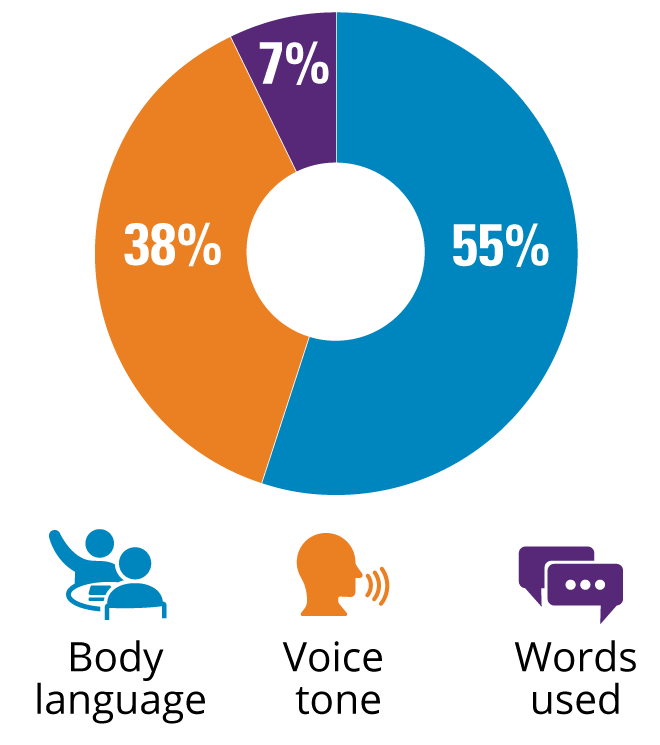Sales Presentation Training
- Description
- Curriculum
Sales Presentation Training Introduction
Today’s selling environment requires a whole different approach to your presentations. To give a sales presentation that persuades today’s busy prospects, stands out from your competition, and is remembered when buying decisions are made, you need to be a powerful communicator.
We groan when we have to attend a meeting with the slide deck as the star.
Whether you’re a CEO, senior manager, or salesperson, you create presentations that have incredibly high stakes. Impressions, relationships, revenue, career promotions, and customer changes are all influenced by sales presentations every day.

Our sales presentation training course will dramatically improve presentation communications. It will change how you plan, ideate, create, and deliver a sales presentation. Once you embrace the concepts around visual storytelling, mediocre slides or content will not be good enough anymore. You’ll have the resolve to challenge the status quo and set a higher sales communication benchmark for yourself and your organization.
The Sales Presentation Training is a full business class program on mastering all aspects of presenting either formally, informally, or remotely. With 15 video lessons and a 53-page eBook to download, you will explore all aspects of powerful presentations and communication. How to inspire customers and create moments that drive higher engagement. How to deliver stories and content that pulls in the audience and gets them to act based on what they are seeing and listening to. This sales presentation training course will propel your presenting skills to the next level and beyond. In this online sales training course, you’ll learn:
1. The Presentation Judges
2. The Audience Journey
3. Creativity and Constraints
4. Planning the Presentation
5. The Clarity of Communication
6. Developing Your Story
7. The Big Idea
8. Simple as Possible
9. Presentation Principles and Techniques
10. Be Completely Present
11. Connecting with the Audience
12. Engaging the Audience
13. Public Speaking plus Q&A
14. Virtual Presentations
Sales Presentation Skills Program Business Benefits
The high-impact sales presentation training program will deliver results by salespeople to:
· Create and deliver more persuasive sales presentation messages that gain attention to instigate customers to act, leading to higher sales performance.
· Engage, educate, involve, and inspire any audience on the merits of the content alongside the stories being presented. Presentations that stand out from a cluttered market, leaving memorable insights and calls to action.
Every sales presenter has the potential to be great; every presentation is high stakes; and every audience deserves the absolute best.
In many instances, presentations are the last impression a customer has of a company before closing a business deal
Sales communication is about getting others to adopt your point of view, to help them understand why you’re excited, optimistic, caring, believable, empathetic, etc. If all you want to do is create a sales presentation full of graphs, facts, and figures, then cancel the meeting and send in a report.
Before beginning a presentation, it’s important to ask yourself questions about your audience. Who are they? What are their needs, and how can you address them? How can the information you have make their lives better? What do you want them to do after the presentation is over?
Describe your audience, including some combination of their fears and needs, and state the opportunities and challenges you need to address in your communications. And of course, don’t overlook their state of mind when they sit down to hear your message.
Five Key Data Principles in Presentation
Tell the truth
Get to the point
Pick the right tool for the job
Highlight what’s important
Keep it simple
Sales Presentation Insights
Our Sales Presentation Skills training program builds the skills that every salesperson, manager, or executive needs to make a compelling case to get customers to act. Win more business by delivering high-impact, customer-focused presentations that actively engage and move their customers.
This expertly created sales presentation training uses proven delivery methodologies that help sales professionals build credibility and connections. The training course has fourteen videos with over three hours of material covering hundreds of topics, tips, and insights. It goes beyond creating glitzy slides, mundane graphics, and death by data, teaching salespeople how to plan and create tailored, valuable presentations that audiences value. How to create stories with P.U.N.C.H., build empathy, create turning points, and present calls to action that match everyone’s expectations. How to use the 3V’s to gain attention with clarity and purpose. This approach builds stronger emotional bonds between the presenter and the audience, building credibility and trust.
-
1Free Sales Presentation Training VideoPreview 4.00
Your prospect invites you to deliver your presentation. You have all the decision-makers together in one room at the same time. Quick check: How will you get their attention? Like most of us, prospects have other things on their minds. Perhaps they have just come out of a meeting on budgets, or they’re worrying about how to handle an unresolved issue.
Your first goal is to pull your listeners into the present and break through the mental clutter and physical distractions that plague today’s business audiences.
-
2Sales Presentation Introduction5.00
Introduction
In today’s more complex selling process, a successful sales presentation can be more like a play in a football game; it is a tool that advances the sale.
-
3The Presentation Judges7.00
The art of delivering a sales presentation transcends technique and enables an individual to remove walls and connect with an audience. To inform or persuade in a very meaningful, unique moment in time. Although presentation techniques have changed as digital technology has progressed, the fundamentals of what makes an effective sales presentation today are essentially the same as they ever were.
-
4The Sales Presentation Journey7.00
When trying to connect with others during a presentation, you must remember that it’s not all about you. Audiences detest arrogance and self-centeredness. Self-centred people don’t connect. No one wants to work with or sit through a presentation given by someone like that. So why are presentations rife with self-centred content? Most presentations start with “me-ness.”
-
5Presentation Creativity and Constraints12.00
Presentations are the currency of business activity because they are the most effective tool to transform an audience, yet many presentations are boring. Most are a dreadful failure of communication. Audiences are screaming “make it clear,” not “cram more in.” You won’t often hear an audience member say, “That presentation would have been so much better if it were longer.”
-
6Planning The Sales Presentation15.00
Planning a presentation is like building a house. You want to first make sure you have a design and a solid foundation that will produce the results you want. All of the cool videos and flashy graphics in the world can’t make up for faulty structure or inconsistent messaging.
-
7The Clarity of Communication13.00
Presentations should have a clear beginning, middle, and end. Two clear turning points in a presentation’s structure guide the audience through the content and distinctively separate the beginning from the middle and the middle from the end.
-
8Developing Your Presentation Story16.00
The next step is to give your core message and supporting messages a logical structure. Structure will help bring order to your presentation and make it easier for you to deliver it smoothly and for your audience to understand your message easily.
-
9Sales Presentation Big Idea8.00
A big idea is that one key message you want to communicate. It contains the impetus that compels the audience to set a new course with a new compass heading. Focus on one idea. The rule of “one slide, one idea” can keep your presentation clean, clear, and on point.
-
10Presentations - Simply As Possible6.00
Though people usually err on the side of making presentation slides more complicated than they need to be, it is indeed possible to be “too simple.” Simplicity is the goal, but to paraphrase Albert Einstein, “Everything should be made as simple as possible, but no simpler.
-
11Presentation Principles and Techniques9.00
Design is necessary to organize information in a way that makes things clearer; it can make things easier for the viewer or the user. Design is also a medium for persuasion. It is not decoration.
-
12Be Completely Present in Sales Presentations12.00
One of the most important things to remember when delivering a presentation is to be fully present at that moment. A good presenter is fully committed to the now, committed to being there with the audience at that particular place and time.
-
13Connecting with the Audience21.00
Good presentations are about sharing ideas and connecting on an intellectual and emotional level in an honest and sincere way. People don’t care what you sell until they know that you care.
-
14Engaging the Audience12.00
Engagement is about tapping the emotions of the audience to get them involved on a personal level with the material, whatever it may be. Like it or not, humans are emotional beings. True, logic is necessary to persuade us, but it is rarely sufficient.
-
15Public Speaking Plus Q&A Sessions11.00
The purpose of public speaking can range from
simply transmitting information, to motivating people to act, to simply telling a story. A good orator should be able to change the emotions of their listener, not just inform them. -
16Mastering Virtual PresentationsVideo lesson
A New York Times article described a study made at the visual-perception lab at Queen Mary University of London, in which “subjects were asked to look at a video of a face that turned to stare directly at them. People found the gaze enjoyable, but only for about three seconds. After that, it became unsettling.” The article then concluded, “The polite thing also winds up being the creepy thing.
-
17Sales Presentation Course ebookText lesson
Download the sales presentation course ebook.





